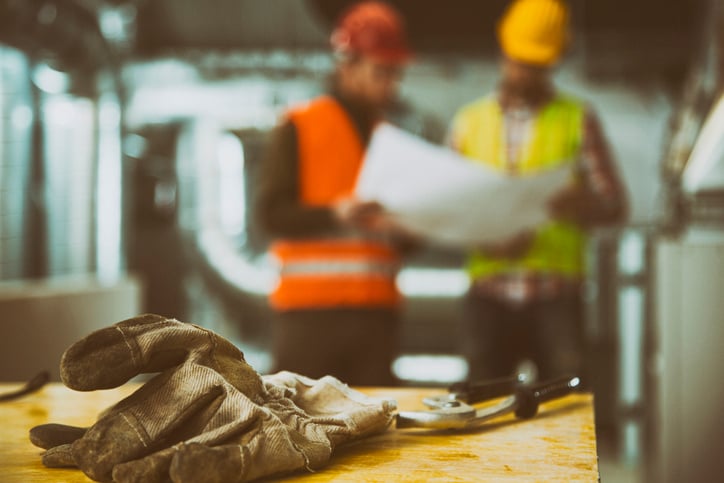Steel Structures: The Gold Standard for Safety and Durability


If you’re looking for optimal safety, design flexibility, resilience, and performance in building material, you can’t do better than steel. Not only does it stand up to natural and man-made disasters, but it helps keep people on your worksite safe, allowing site managers the peace of mind to know that they’ve created the most durable environment possible.
So why is steel the best material used in construction?Steel’s Resilience and Toughness Are Unmatched
Steel has very high compressive and tensile strength, which makes it a resilient structure. That’s part of the reason it stands up to natural events such as earthquakes and other unintended structural movements better than any other material. Its high strength-to-weight ratio and its ductility – its ability to undergo strain without warping – give steel the ability to hold up even under seismic activity. Steel’s flexibility allows it to bend to accommodate extreme weather, but it will not break. Instead, it will resume its original form.
Due to steel’s stability, it also does not expand and contract when exposed to the elements. Because steel structures have fewer pieces than concrete or wood, they put less weight on their foundations, limiting any structural damage from settling.
Steel Is a Predictable Material
Engineers don’t want surprises, and neither do the tenants who later occupy their structures. Building with a predictable material lends safety and peace of mind to any project - and steel is the most predictable material you can use.
Engineers know when steel undergoes stress, it will still maintain its basic properties and chemical composition. That’s not the case for concrete, for example. Concrete is an aggregate of many chemical compounds mixed together with paste. Not only can the chemical compounds of concrete change, but thermal expansion and contraction can occur when the material is exposed to varying temperatures. All of these changes cause concrete to deform, shrink, crack, and lose strength over time, causing safety hazards and requiring frequent repairs. Timber, too, will buckle under pressure because the wood grain is not consistent throughout.
Steel Is One of The Most RESILIENT STRUCTURES On Earth
Durability is also a key feature of steel. In fact, it lasts so long that it’s one of the few materials that can undergo repetitive use, making it more environmentally friendly.
The real test of any material is how it fares against nature, in big ways and small. In addition to weather events, steel is resistant to natural occurrences like mold and rot. And as an inorganic material, you don’t have to worry about larger living things like termites or rodents, which easily find homes in materials such as timber.
Steel is also impervious to corrosion, and special coatings can give customers a great deal of flexibility when choosing any extra treatments they may want for their unique uses and environments.
Steel Is Strong and Safe
Steel is one of the most resilient structures you can have. You can count on steel to protect tenants, workers, and materials stored within your building. After all, what good is a building if it stays standing but harms the people inside?
Steel is non-combustible and therefore fire-resistant. Steel is a preferred thermal-resistant material when looking at options for your multi-hazard buildings. Steel is incapable of contributing to the ignition, spread, or size of fires. Steel buildings are also conductible, so they’re less likely to be damaged by lightning.
Steel’s tensile strength can also allow it to withstand hurricanes, heavy snow loads, and explosions. Steel can absorb the shock waves of even large impacts, making it the best material to use in blast-resistant buildings. And we can prove it – we’ve conducted comprehensive blast tests on our steel buildings. RedGuard’s anchored, unanchored, and ground unit blast resistant buildings experienced no notable structural damages after a 6,000-pound ammonium nitrate/fuel oil (ANFO) charge located less than 200 feet away. In addition, independent inspectors found no notable permanent deformations or cracking, meaning the structures met the requirements for ASCE’s Low Response Level rating, which is the safest rating.
More Advantages of Steel Buildings
Steel is a superior building material because of its innate durable qualities, but it’s also practical for other reasons. For example, as building policies change and harsh environmental phenomena become more common, structural quality and integrity checks are critical. Steel structures make these checks much easier since their parts are exposed and more accessible. They’re also easier to modify, allowing them to change with the times. These all add to the overall long-term value of steel buildings.
And, finally, because of steel’s superior qualities, it’s recyclable at the end of its life cycle, making its durability the ultimate advantage to both people and the planet.
RedGuard Sales & Marketing
The RedGuard sales and marketing team curates and writes on a variety of topics regarding blast-resistance and modular buildings. To inquire about any of the topics you read about on our blog, connect with us.

